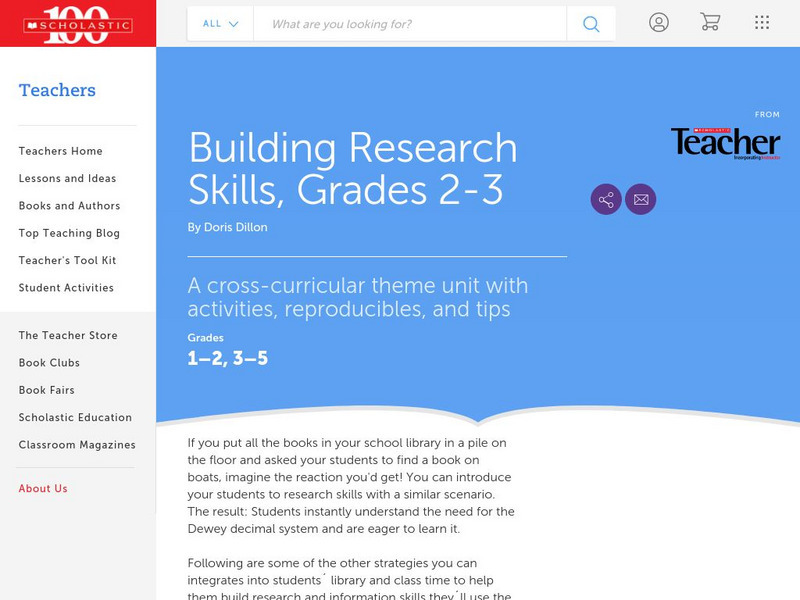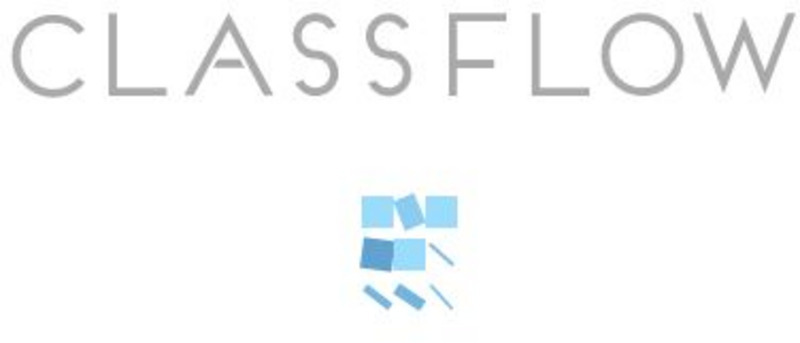Hi, what do you want to do?
Curated OER
Electrical motors
Students investigate and experiement with a 9-volt motor. They will use the connecting wire and battery pack to discover fans.
Curated OER
Celebrate Family Story Month
Creative lesson and activity ideas that record family stories and memories.
Curated OER
Generations: An Exploration of our Families Through Literature
Students complete a unit of lessons on families. They read and analyze various stories, label a map, assemble sentences, write letters to grandparents, analyze character traits, and write and illustrate a sheet for a class book.
Curated OER
Sly Book Channel
Create a commercial for a favorite book and broadcast this pitch on the Sly Book Channel! Learners practice retelling, summarizing, comparing/contrasting, and evaluation skills as they prepare their scripts. The approved scripts are then...
Curated OER
K-5 Integrating Character Education/A Lesson on Responsibility
Students demonstrate traits of responsibility. They explain that accepting responsibility is more rewarding than avoiding responsibility. Students bring pictures of responsible and irresponsible situations or behaviors. They explore the...
Curated OER
Ocean Expedition with Jacques Cousteau
Students role play that they are on an ocean voyage with Jacques Cousteau as they study plant, and animal species and adaptation. They write a five page journal, create artwork of the expedition.
Curated OER
Amazing Animal Alliteration Book
Students understand the meaning of alliteration. In this alliteration lesson plan, students write sentences using alliteration and recognize how it changes the writing in a story.
Curated OER
Tales From Around the World
Students read stories. In this culture lesson, students read stories from different regions around the world. Students look for each region on the map and listen for interesting cultural details in the story. Students then discuss the...
Curated OER
Trout Cookies
Students explore the external anatomy of a fish. In this anatomy and adaptations lesson, students look at an image of a trout and identify its various external features including fins, eyes, spots, parr marks and lateral line. Students...
Curated OER
Who are Our Leaders?
Students discuss and identify current state and national leaders, and relate two specific details about them.
Curated OER
Why We Trade: Exchanging Goods and Services
Students conduct simple bartering and trading activities and consider how product value can be altered by the market.
Curated OER
Stretching It
Students recognize the use of exaggeration and understand how it may enhance the story, painting, conversation or event. Students transfer their understanding of exaggeration as it is used in many places, ie., daily life, paintings,...
Curated OER
Juliette Low - Founder of the Girl Scouts
Second graders identify the founder of the Girl Scouts Juliette Low. They name reasons as to why clubs are created and brainstorm a list of other clubs they know about. They read the story "The Green Leaf Club News" and discuss why she...
National First Ladies' Library
Ugly Duckling: Definitions of Beauty
Students examine the degree to which physical appearance influences how one is viewed in society. They draw a timeline of the history of beauty and complete a visual scavenger hunt of history.
Curated OER
Timeline of 9/11
Students explore the series of events that cumulated in the events of September 11, 2001. They understand the importance of the events of September 11, 2001 and the effect on US history. They createa timeline utilizing photos and visual...
Curated OER
Amazing Autobiographies
Students read a wide range of literature from many periods in many genres to build an understanding of the many dimensions (e.g., philosophical, ethical, aesthetic) of human experience. They apply knowledge of language structure,...
Curated OER
The Balance of Good Health and the Food Pyramid
Students explore the importance of good health and the food pyramid. They examine food labels and the importance of healthy food choices. Students investigate food additives.
Curated OER
Egg Hatching into Sequencing
Pupils create an egg. In this language arts lesson, students create an egg and then take photographs as the egg is being hatched. Pupils write about the sequence of the hatching.
Scholastic
Scholastic Instructor: Building Research Skills 2 3
Check out this site to learn more about building research skills for grades 2-3. This site offers suggestions for activities that will sharpen your abilities.
ClassFlow
Class Flow: Library Dictionary
[Free Registration/Login Required] This flipchart can be used in a library/resource center to illustrate alphabetical order and how books are arranged on the shelves in the library. It also discusses alphabetical order to help teach...
Library and Archives Canada
Nlc: Defining Primary and Secondary Sources
Libraries and archives hold documents and books that can be used for your research projects. Learn how to divide and identify them into primary and secondary sources in this tutorial.
Library of Congress
Loc: Teachers: Personal Stories and Primary Sources
Students will explore the value of personal stories and first-hand accounts when exploring history, in this case, the events of the early twentieth century, which included World War I and the Great Depression. Through this five-unit...
Alabama Learning Exchange
Alex: The Power of the Presentation
Learners will research an endangered African animal using resources from the Alabama Virtual Library and other Internet sites, and then design and present a persuasive and informative digital slideshow presentation on the animal and how...



























